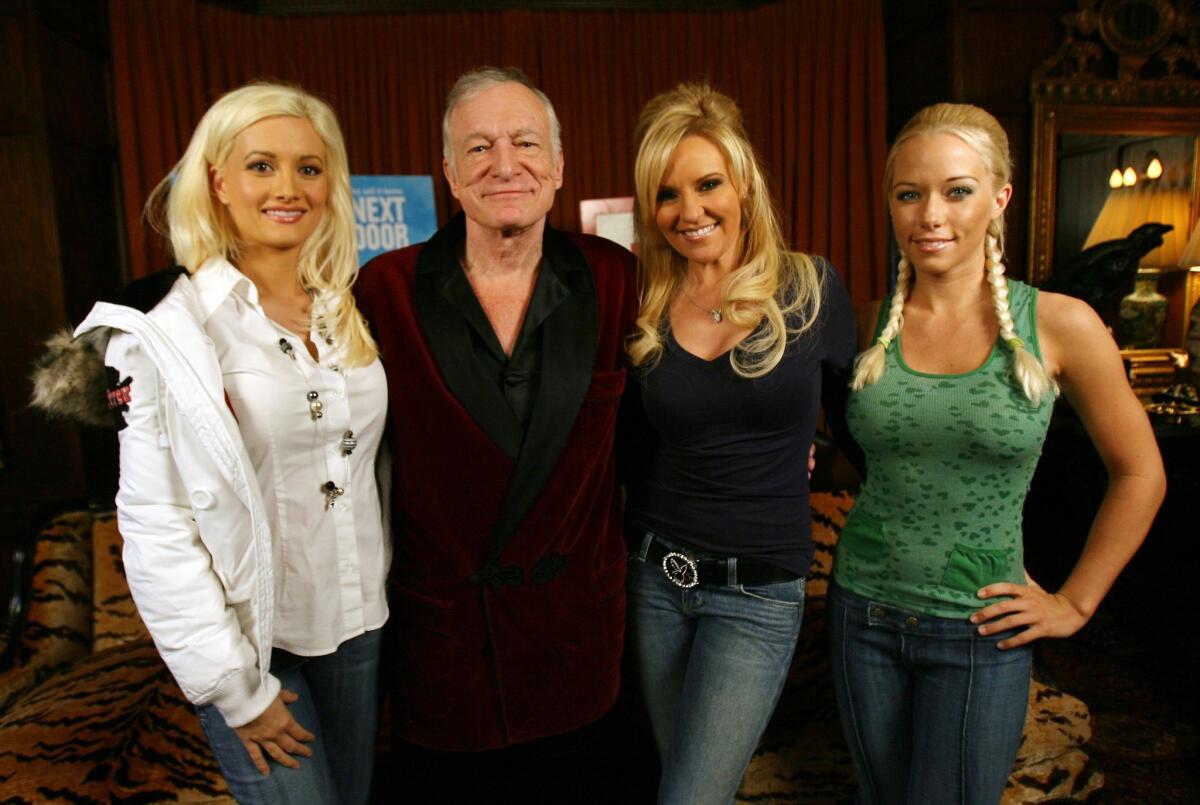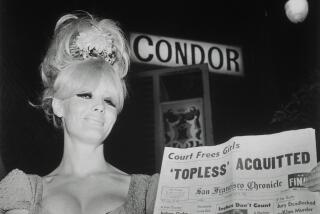No nudes allowed! Playboy decides to put it all back on

Hugh Hefner with three of his Playboy ladies, from left, Holly Madison, Bridget Marquardt and Kendra Wilkinson, in 2007. After more than a half-century of featuring naked women, Playboy magazine will present clothed models.
- Share via
Where once Marilyn Monroe, Pamela Anderson and Naomi Campbell lolled in the nude, future centerfolds will be bikini-clad, and more, Playboy has announced. The magazine that got famous for showcasing naked women is giving up nudity.
What’s to blame, of course, is the Internet.
“You’re now one click away from every sex act imaginable for free,” Playboy chief executive Scott Flanders told the New York Times. He added, “And so it’s just passé at this juncture.”
SIGN UP for the free Essential Arts & Culture newsletter >>
Playboy founder Hugh Hefner, 89, agreed to the idea. When a redesign of the magazine launches in March 2016, it will feature models who are covered up instead of fully nude.
Hefner launched Playboy in 1953 celebrating naked women and high-end bachelor living. The magazine scandalized and titillated in the middle of a culturally conservative decade, and helped Americans to imagine guilt-free premarital sex, affairs and the freedom that arrived in the ‘60s.
Playboy reached its peak in 1975, with 5.6 million subscribers.
Now, like many publications, its subscription base is much smaller. To reach new readers via the apparently chaste channels of social media, it pulled nudity from its website in August of 2014. The New York Times reports that the average age of its reader dropped from 47 to just over 30, and its site traffic quadrupled.
During its heyday, the magazine was rightly accused of objectifying and exploiting women, but it paired that content with highbrow literary articles. The naked women were the draw, but the content led to a running joke for male subscribers and newsstand buyers: I only read it for the articles.
And now that’s absolutely true. Without naked women, Playboy will be just another publication struggling to stay abreast of the other lad mags.
Book news and more; I’m @paperhaus on Twitter
More to Read
Sign up for our Book Club newsletter
Get the latest news, events and more from the Los Angeles Times Book Club, and help us get L.A. reading and talking.
You may occasionally receive promotional content from the Los Angeles Times.








